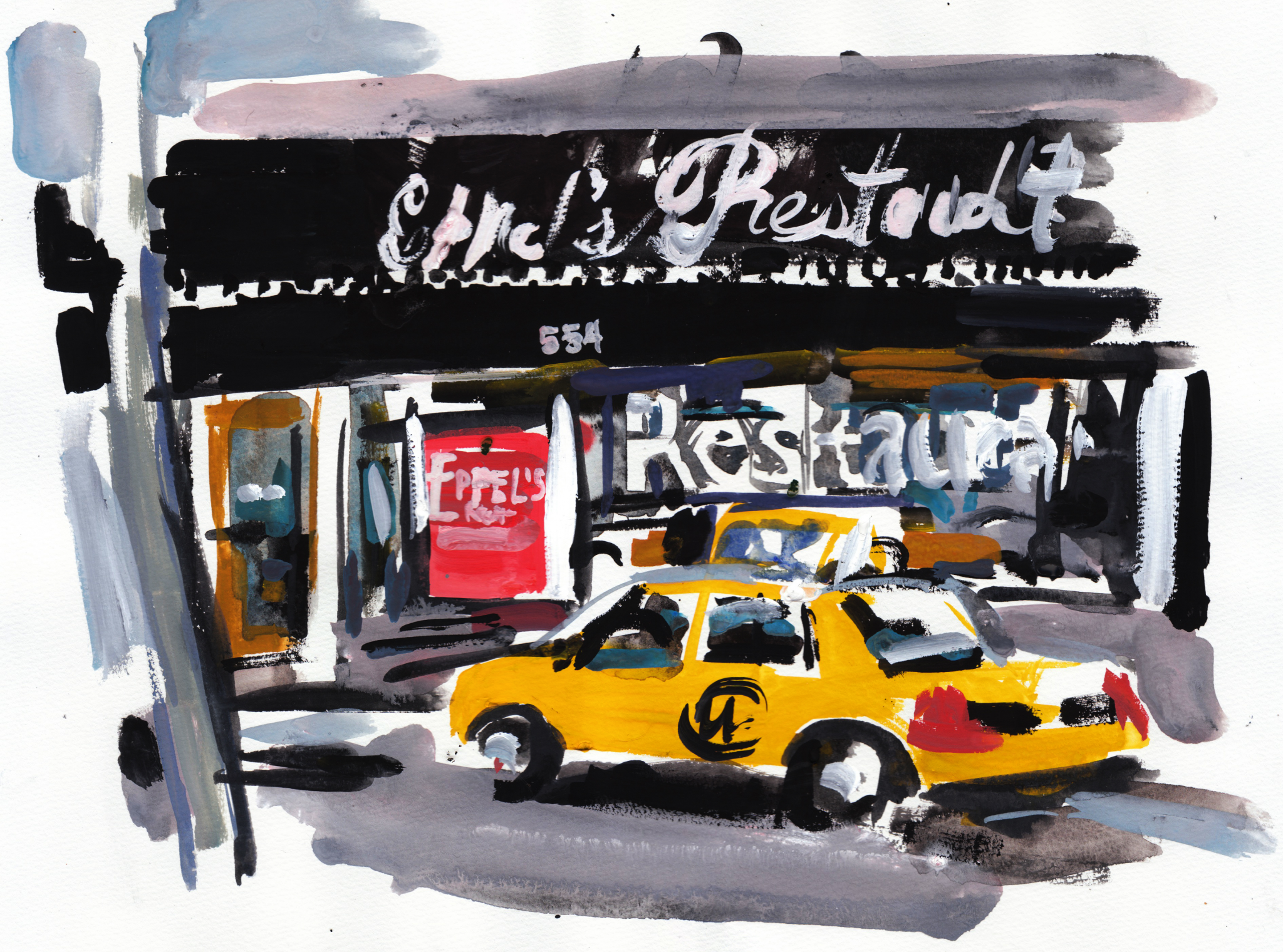Both “University Village” and “Little Italy” could be considered misnomers—titles that describe the neighborhood by certain identities as others have been successively carved away. In fact, the story of this neighborhood contains many of the processes of change that mark the history of Chicago at large: the rise and fall of public housing, shifts in demographics, and urban renewal.
In 1889, sociologist Jane Addams founded Hull House at the corner of Polk and Halsted Streets. Addams was a key figure in the settlement house movement, a social reform movement of the late nineteenth century in which largely middle-class academics and reformers moved into lower-class neighborhoods in an effort to work with residents to improve conditions. Hull House sociologists meticulously mapped the nationalities of the Little Italy neighborhood in 1895, showing it to be an immensely diverse area at that time. Still, the Italian community that began settling along the Taylor Street corridor in the late nineteenth century grew ever denser, eventually becoming home to a plurality of the city’s Italian Americans.
From the 1930s onward, Little Italy underwent several rounds of reinvention. Considered a crime-ridden slum by the time of the Depression Era, the neighborhood became the site for some of the nation’s first experiments in public housing. Many homes and businesses on and around Taylor Street (the main commercial strip) were razed for the construction of the ABLA Homes, a complex of four CHA housing projects. In the 1960s, the neighborhood underwent a massive demographic shift. Despite strong outcry from neighborhood activists like Italian-American Florence Scala, then-Mayor Richard J. Daley approved the construction of the University of Illinois at Chicago campus—a development that displaced thousands of residents.
Today, just a single building remains from the ABLA Homes, and it’s in the process of being converted into a national museum of the public housing experience. A piece of the original Hull House property still stands as another museum, although it’s been hemmed in by UIC buildings. Taylor Street remains dotted with Italian restaurants and businesses. Filled with informal cafés and foot traffic, the neighborhood is now largely built around its college-aged residents, but an observant visitor can still catch glimpses of the past in its streets.
BEST FUTURE MUSEUM
National Public Housing Museum
At the corner of Taylor and Ada Streets is a three-story brick structure. Its simple, clean lines are unembellished, and each of its square windows is boarded up. A teardown waiting to happen? Not quite. This is the last building remaining from the Jane Addams Homes, once part of a massive grouping of four public housing projects called the ABLA complex. While all other buildings in the complex were razed as part of the Chicago Housing Authority’s Plan for Transformation in the mid-2000s, this 1938 structure endures as a remnant of an era in which public housing was defined by optimism and experimentation. The building will soon be the site of the National Public Housing Museum, a project that aims to recover and preserve the experiences of the countless people who grew up in public housing, from its Depression-era roots to the present day. According to its website, the Museum will also serve as a national focal point for discussions about the immense value of affordable housing across the country. Though the Museum board is still working to plan and fund their move into the building, the site offers a glimpse at both the past and the future of Taylor Street. National Public Housing Museum site, 1322-24 W. Taylor St. nphm.org (Rachel Schastok)
BEST BOARD AND BOOKS
Ghareeb Nawaz Express
Named for a twelfth-century Sufi saint from India, Ghareeb Nawaz Express features a condensed selection of favorite dishes from the menu at their larger Devon location, with speedy service, cheap prices, and heaping portions that draw many hungry UIC students. The spicing on the meat thali sauces is hit or miss, with some that fall flat. But order any of the biryanis and dig in to a pile of beautifully seasoned rice with your choice of meat or vegetables, served on a thin silver plate with separate compartments for raita yogurt sauce and sliced onions. The storefront itself isn’t much to write home about, just a few small tables with a clear view into the kitchen and a television that might be showing Seinfeld. Bookworms take note, though: the restaurant opens up onto the University Village branch of Powell’s Books for a seamless transition from dining to book browsing. Ghareeb Nawaz Express, 807 W. Roosevelt Rd. Monday-Friday, 11:30am-12:30am; Saturday-Sunday, 1pm-11:30pm. (312)433-0123. ghareebnawazexpresschicago.com (Rachel Schastok)
BEST WORKING BREAKFAST
Eppel’s Restaurant
Eppel’s is the kind of place that’s rarely written about by food critics. It’s simple diner food done quickly and well for working people. It’s been open since Maxwell Street was on Maxwell Street, and it carries on even though few early patrons would recognize its surroundings as their city anymore. See feature-length story. (Dmitry Samarov)

